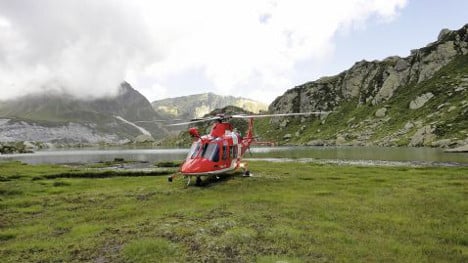Basements and cellars in the village were flooded and small landslides reported after heavy rain fell continuously for two hours on Thursday morning, reported newspaper 20 Minuten.
Local resident Ramon Haas told the paper: “It was the storm of the century. I’ve never seen anything like it.”
The floods washed away a wooden bridge, covered roads and fields and carried away hay bales, he said.
A farmer who lives 300m from the Emme had to carry his disabled daughter away from the house when he saw the river rising.
“I didn’t have any choice,” he told the paper. “At 8am I saw the river was high. Less than an hour later the water came into my house.”
He was unable to save his 80 chickens, which were washed away.
According to MeteoNews, 27 litres of water per square metre fell between midnight and 5am around Interlaken.
Storms and heavy rain have battered Switzerland of late, and don’t show signs of abating just yet, with thunder and more rain forecast for Friday.
The bad weather is likely to exacerbate the already high water levels in many parts of the country.
Flood levels had come down slightly in the canton of Bern during Wednesday after having reached critical levels earlier in the week.
Paths along the river Aare were off limits to pedestrians, and water levels in Lake Brienz were dangerously high.
In Lörrach, near Basel, a 33-year-old woman had to be pulled from the swollen river Wiese after trying to rescue her dog, which had fallen into the river.




 Please whitelist us to continue reading.
Please whitelist us to continue reading.
Member comments